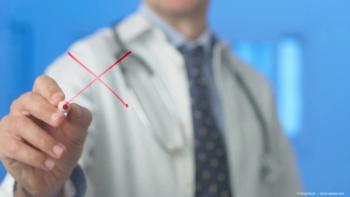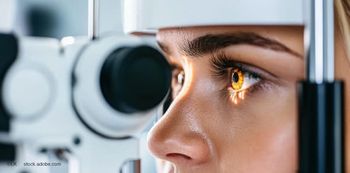
NASA scientist Steven Laurie, PhD, on extreme telemedicine during long-duration spaceflight
NASA’s development of autonomous eye imaging technologies for astronauts aboard the International Space Station is paving the way for remote, high-quality eye care both in deep space and underserved regions on Earth.
Challenges in space exploration are driving new approaches to delivering eye care in the most inaccessible environments, according to Steven Laurie, PhD, senior scientist and technical lead with the Cardiovascular and Vision Laboratory at NASA’s Johnson Space Center in Houston, Texas. His talk at the Heidelberg 2025 International SPECTRALIS Symposium – And Beyond (ISS), held June 13–14 in Heidelberg, Germany, spotlighted how technologies originally designed for spaceflight, like the Heidelberg Spectralis OCT2 and a new portable Mini OCT, are setting the stage for autonomous medical diagnostics in deep space—and potentially in the most remote regions here on Earth.
Sheryl Stevenson, executive editor with the Eye Care Network, caught up with Laurie to learn how spaceflight is driving innovations in extreme telemedicine—on orbit and beyond.
What are the key takeaways from your presentation?
Steven Laurie, PhD: Astronauts onboard the International Space Station (ISS) use the Heidelberg Spectralis OCT2 to image their eyes, and these images have revealed structural changes in the retina and optic nerve head. I will discuss the unique approach NASA has developed to support these data collection activities, including use of remote guidance from Earth. I will end by sharing our experience with a new device Heidelberg Engineering is developing, the Mini OCT, that is smaller in mass and volume than the Spectralis, and that will not require the remote guidance from Earth.
What are the unique ophthalmic challenges that astronauts face during extended space missions, and how is telemedicine being adapted to address them?
Laurie: In 2011, the first reports were published documenting the development of optic disc edema and choroidal folds in astronauts flying ~6 month missions to the ISS. Soon after, NASA began using the Spectralis OCT2 to track the development of these findings throughout the mission, and this requires real-time video and communication support from experts on the ground to guide crewmembers in the collection of the OCT images. Over the last 10+ years NASA has used telemedicine to support astronauts in collecting OCT images throughout their spaceflight missions, revealing ophthalmic changes in 60% to 70% of crewmembers.
Can you describe the technologies or protocols that enable effective diagnosis and intervention when specialists are millions of miles away?
Laurie: The ISS orbits ~250 miles above the surface of the Earth, allowing for only ~1-2 second communication delays between experts in mission control, and crewmembers onboard the ISS. We utilize a video feed from within the ISS cabin, 2-way audio, and screen-sharing of the Heidelberg software to collect the OCT images. Images are downlinked and can be reviewed by experts within hours of data collection. Crewmembers receive two 1-hour long training classes on how to use the hardware before their mission. This training utilizes very specific wording and directions to guide crew through acquisition of OCT images.
How might innovations developed for spaceflight telemedicine translate to patient care in remote or underserved areas here on Earth?
Laurie: The experience that NASA has developed in using remote guidance to collect OCT images on the ISS highlights that remote telemedicine for collecting OCT images is possible and can be utilized to generate high-quality data. While this represents a great opportunity for remote or underserved populations, it still requires the hardware to be in the remote location, and for real-time audio, video, and screen-sharing communication with experts at a different location. The advancements with the new Mini OCT device represents the next frontier for patients to access medical devices in remote locations without requiring the communication pathways or additional technicians to support data collection. This expands the opportunity from telemedicine supported in real-time by clinicians, to autonomous data collection that only requires transmission of the final images to clinicians.
Anything else to add that you feel would be helpful for our audience to know?
Laurie: As NASA looks toward sending astronauts back to the Moon and on to Mars, the distance from Earth will limit the real-time communication that we enjoy when crewmembers are on the ISS. Thus, our ability to utilize remote guidance and real-time communication with experts on the ground will no longer be possible. Technology such as the Mini OCT represents one possible solution to this problem, where astronauts can autonomously collect OCT images on themselves, and then have those images sent back to Earth for assessments by clinical experts. We are excited to see the progression of this technology that may benefit astronauts, as well as patients on Earth.
Newsletter
Don’t miss out—get Ophthalmology Times updates on the latest clinical advancements and expert interviews, straight to your inbox.













































.png)


